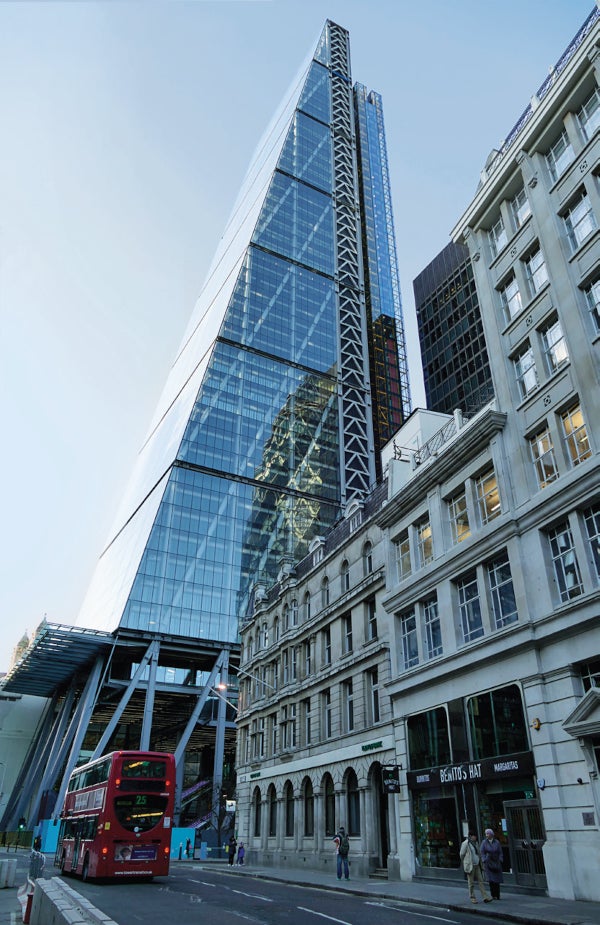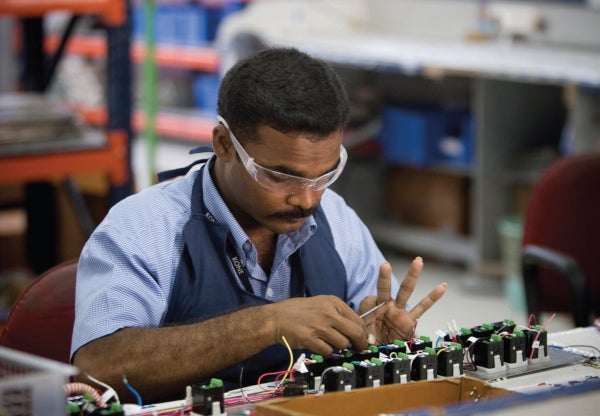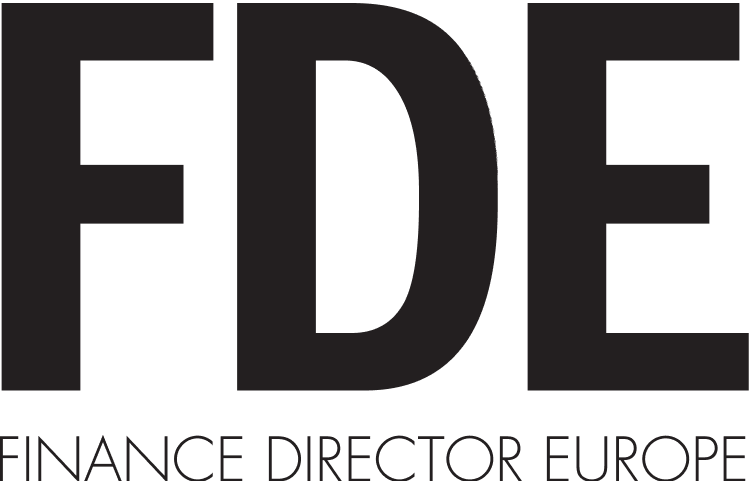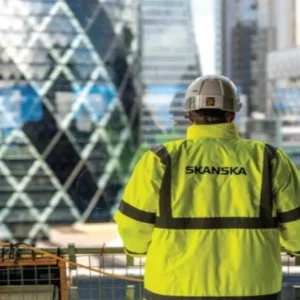
With culture at its heart, Kone is a vast business with even greater ambitions – among them to improve the flow of urban life. With roots that predate the Russian Revolution and the fall of the Habsburgs, the company has seen its share of change. Starting life in a nondescript Helsinki machine repair shop in 1910 – Kone means ‘machine’ in Finnish – it has grown to be a transportation giant, building everything from automated walkways to lifts.
“We’ve expanded to having our own operations in 60 countries, and partners in more than that,” says Ilkka Hara, the company’s CFO for more than six years. True enough: Kone does business the world over, and boasts over 65,000 employees. Even more impressive, the company moves more than a billion people each day via its elevators, escalators, automatic building doors and other solutions.
That focus on the here and now is consistent with Kone’s philosophy more broadly. “What is important is that we have a very mission-driven business,” Hara explains. “We want to improve the flow of urban life. We bring value to our customers by understanding their needs in an urbanising world. Our vision is to create the best people flow experience throughout the full lifecycle of a building.”
‘People flow’ is a term you’ll hear Kone use a lot. In fact, it even has an arm of the business dedicated to the concept. The principle stems from using real data, collected from sensors, to understand how buildings and other environments are being used. New projects – such as an office block – can then be simulated to predict how they might be used in the future. Things such as traffic flow, where bottlenecks might be, and how users might interact with their environment, can all be analysed. Once that’s known, Kone says, it can tailor solutions to meet the individual needs of a customer, their buildings and the people using them.

It’s certainly an interesting proposition. If you can understand what’s happening within a customer’s environment, after all, you can presumably make decisions that help your bottom line too. In fact, the information is so valuable that Kone regularly shares the data with investors, giving them an insight into how the company is performing, as well as the areas it can develop over the years ahead.
A data democracy
Kone is similarly enthusiastic about using data and digitalisation when it comes to finance especially. Examine the CFO’s CV, and this makes sense. Hara has been on the cutting edge of the digital transformation of finance for years, having worked at Microsoft and Nokia, as well as at some of the world’s leading investment banks, before finally joining Kone in 2016.
This long apprenticeship has helped give Hara a robust sense of his role as a financial director – especially when it comes to his own competencies. As Hara puts it, there are three areas where harvested data can have a real impact: the work the finance team does; how it supports others to find efficiencies and better operational processes; and how customer data can help Kone better meet customer needs.

“From a finance perspective,” Hara argues, “[digitisation] has meant that many of us have had to learn more about how to use data, how to drive decision-making everywhere in the company, and how to be more data-based.”
Of course, none of this is new. But using this vast resource to better inform financial and, subsequently, operational decision-making among what Hara calls “business partners”, is an increasingly critical objective. He says it’s about connecting the data dots in a way that all sides of the business can benefit. “So, how to reach out and really provide the insights that help all of us make better decisions on a day-to-day basis?” Hara asks. “That is the key challenge we face in finance.”
One example is the thousands of technicians Kone has around the world, all maintaining or installing elevators, each with connected handheld devices that send data back to the company’s headquarters near Helsinki. That is interpreted to enhance their operations, benefiting the business, technicians on the ground – and even customers they service. Describing this shift as a key development, Hara explains that this kind of data connectivity can equally be used by his financial team. “I think one of the core competencies, and things we need to get right, is forecasting,” he says. “How can you use data, and new technologies to be more efficient, and more accurate? I think all of these come together as a holistic enterprise.” That all-inclusive approach means every function, from any part of the business, can inform another.
200,000
The number of people worldwide who move to a city every day. That equates to 140 a minute.
Kone
Another good example of the way Kone uses data can be seen in its worldwide army of 200,000 lifts and escalators. Thanks to the wizardry of automated data collection, each of these machines beams back operational and maintenance information in real time. The finance team, for its part, can use this data in its forecasting. “We now understand how the elevators are working, how much they’re being used and what type of use they’re having,” Hara says. “That actually correlates well with our expected revenue generation and business costs linked to it. Most importantly, we see how much value the customer receives from having good people flow in their business.” That information, in turn, can then be used to educate investors – and explain to customers when their devices are likely to need servicing.
Going to the people
The benefits of digitisation, automation and data gathering are therefore clear. But digital transformation can’t be done alone – or even simply within the hallowed halls of the finance department. Hara, for his part, is clear here, stressing that this new world requires fundamentally revamped relationships with every aspect of Kone’s business.

“As a finance team,” he says, “we’re changing both in how we partner with our business colleagues, but more importantly in how we can continue to drive efficiencies, speed and automation to be able to direct more of our time to those business partnerships.” This, he warns, is crucial – not least given digitisation could risk making those partnerships becoming less important. Rather, if Hara says that digitisation is important, personal competences are at least equally vital.
There are broader challenges too. With all this information, it’s tempting for the ambitious CFO to just digitise for the sake of it. But, as Hara stresses, focusing on outcomes is the key – as is remembering that digitisation is an ongoing process. “The more you do, the more opportunities you can actually find to do better,” he says. “Honestly, I think even though results are actually quite good at Kone, there’s still a lot of opportunity to be better.”

Get things right, indeed, and the possibilities are endless. From making processes more efficient to unearthing new investment opportunities, Hara believes that enterprise-wide data transformation has revolutionary potential. As he puts it: “Really focusing on where the value is and looking at the opportunities in an end-to-end manner is the best way to really progress.”

All the same, if data is fast becoming the vehicle that drives business forward, there still needs to be a person – or people – behind the wheel. It’s a point Hara is again keen to emphasise. In his words: “Having an impact is about connecting with people, building capable, diverse teams that can contribute value.” While data and automation can free up time, Hara adds, that time should be used to interact with others around you, from your colleagues to customers in the field. As good as data is at changing a business, in short, humans still need to work together to have a real, meaningful impact – clear enough, as Kone’s fortunes rise even as its lifts carry millions.
50%
The percentage of people currently living in urbanised areas around the world, set to rise to 70% by 2050.
UN
>60%
The percentage of land projected to become urban by the end of this decade – and which is yet to be developed.
UN






